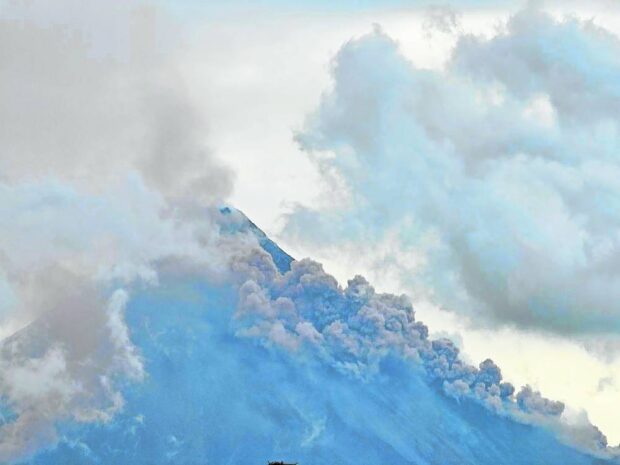
INCREASED ACTIVITY Mayon Volcano continuously generates pyroclastic density currents and lava flow as seen in this photo taken at 5:40 p.m. on July 10 in Daraga, Albay. —PHOTO CONTRIBUTED BY DENNIS MIRABUENO
MANILA, Philippines — Mayon Volcano’s earthquake and rockfall events have decreased, but its sulfur dioxide emission has surged over the last 24 hours, the Philippine Institute of Volcanology and Seismology (Phivolcs) said on Sunday.
Citing its 5 a.m. bulletin, Phivolcs said it monitored five volcanic earthquakes, and 158 rockfall events in Mayon, while the pyroclastic density currents (PDCs) stayed at four.
This is lower than the 22 volcanic earthquakes and 175 rockfall events the agency recorded the day before.
Phivolcs also said that sulfur dioxide emission of Mayon has climbed from 1,758 metric tons on July 21 to 2,047 tons on July 22, with plumes reaching 400 meters tall while drifting southwest.
The agency likewise monitored that the volcano’s effusion of lava flow has reached 2.8 kilometers (km) along Mi-isi and Bonga Gullies, and 600 meters along Bansud Gully, while the lava dome collapse on the said gullies extended to 4 km from the crater.
Phivolcs warned locals that rockfalls, landslides, avalanches, ballistic fragments, lava flows, and moderate-sized explosions might occur within areas near Mayon Volcano, which has been under Alert Level since June 8.
As of July 23, the National Disaster Risk Reduction and Management Council said that Mayon’s unrest had already affected 38,389 individuals and displaced 20,227 locals residing in 26 barangays within Bicol Region.


